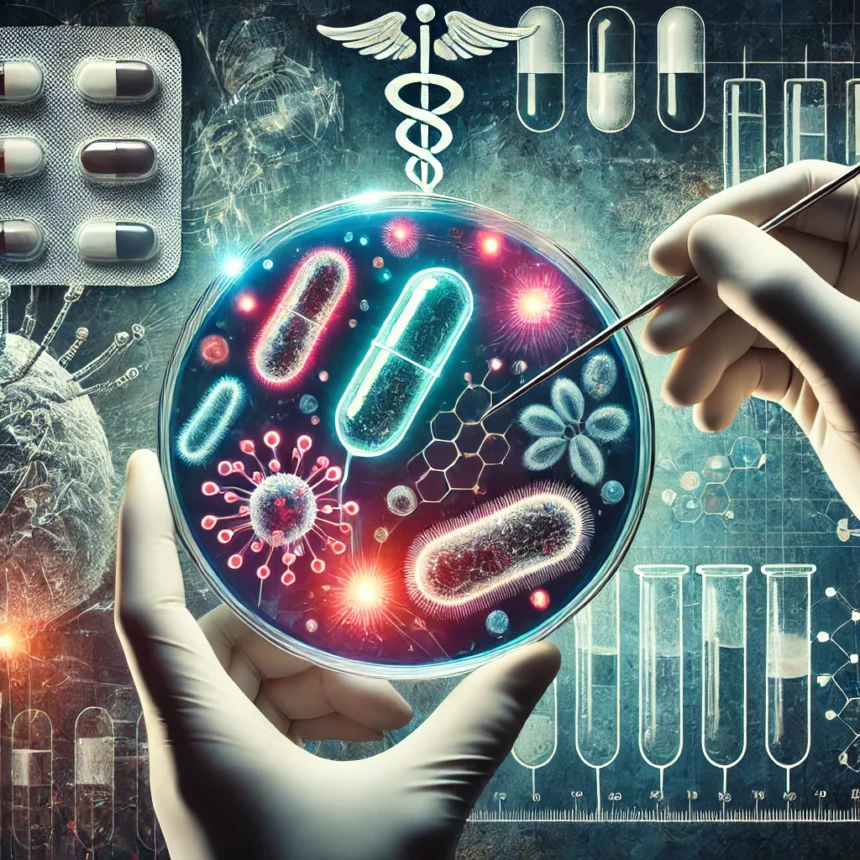Antimicrobial resistance (AMR) is one of the most important health concerns of the twenty-first century. It happens when bacteria, viruses, fungi, and parasites evolve over time and develop resistance to the medications used to eliminate them. This makes diseases more difficult to treat, raises the danger of disease transmission, and threatens to return humanity to a time when small infections may be fatal.
MUST READ; The Truth About Dairy: Is It Good or Bad for You?
What is antimicrobial resistance?
Antimicrobial resistance occurs when germs develop methods to withstand exposure to medications that were previously efficient in killing them. Antibiotic resistance is the most well-known form of AMR, as it impacts the treatment of bacterial illnesses. Resistance can also develop to antiviral, antifungal, and antiparasitic drugs. One of the most concerning elements of AMR is the emergence of “superbugs”—bacteria that have developed resistance to numerous antibiotics, leaving clinicians with few or no treatment choices.
Causes of Antimicrobial Resistance:
Overuse and abuse of antibiotics is one of the leading causes of AMR. Many clinicians overuse antibiotics for illnesses like viral infections, which do not respond to these medications. Antibiotics are available over the counter without a prescription in several parts of the world, which encourages self-medication and incorrect use. When antibiotics are used wrongly, whether through partial courses or incorrect dosages, bacteria are more likely to develop resistance.
Another significant factor to AMR is the extensive use of antibiotics in agriculture. Farmers frequently use antibiotics to increase cattle development and avoid disease in overcrowded farming circumstances. This approach promotes the development of resistant germs, which can be passed to humans via the food supply. The presence of antibiotic residues in meat and dairy products exacerbates the situation, making it more difficult to prevent the spread of resistance.
Poor infection management in healthcare settings is another important cause of AMR. Hospitals and clinics can become breeding grounds for resistant germs if hygiene and sanitation precautions are not carefully implemented. Inadequate cleaning of medical equipment, incorrect disposal of medical waste, and overcrowding in healthcare institutions all help to spread resistant illnesses. To reduce risk, both healthcare professionals and patients must follow strict infection prevention measures.
The lack of novel antibiotics and therapies also contributes to the growth of AMR. Developing new antibiotics is costly and time-consuming, and pharmaceutical companies have reduced their research and development efforts due to high expenses and poor financial returns. As bacteria mutate and gain resistance, the world’s viable therapies become increasingly limited. Without ongoing investment in antibiotic research, we risk returning to the pre-antibiotic era, when even common infections might be lethal.
Finally, global travel and trade promote the rapid spread of resistant microorganisms across borders. An ailment that develops in one country can quickly spread over the world via international travel and food imports. This elevates AMR from a local issue to a global disaster requiring concerted worldwide action.
How Can we Combat AMR?
One of the most effective strategies to fight AMR is to encourage the sensible use of antibiotics. Doctors should only prescribe antibiotics when absolutely required, and patients should be made aware of the necessity of following their treatment plan. Patients should avoid self-medication and seek expert medical advice before using antibiotics.
Stronger agricultural controls are also required to reduce antibiotic abuse in livestock farming. Governments should impose stronger laws limiting the use of antibiotics in food production and encouraging alternative farming practices. Consumers can help by purchasing antibiotic-free meat and dairy products, lowering the need for antibiotic-fed animals.
Improving cleanliness and infection control procedures in healthcare facilities is crucial for preventing the development of resistant illnesses. Hospitals should follow tight protocols for sterilization, hand hygiene, and patient isolation as needed. Vaccination programs should also be promoted to avoid infections that might otherwise necessitate antibiotic treatment, lowering overall demand for these medications.
Investment in new antibiotics and alternative treatments is critical for combating AMR. Governments, research institutes, and pharmaceutical firms must collaborate to create new antimicrobial medications and investigate novel treatments like bacteriophage therapy. Public-private partnerships can assist speed up the discovery and development of novel treatments.
Public awareness activities are also important in the fight against AMR. Governments, health groups, and educational institutions should actively educate the public about the risks of AMR and encourage appropriate antibiotic usage. Schools, businesses, and social media platforms can be used to raise awareness and inspire behavior change on a community scale.
In conclusion, the increase of antibiotic resistance is a worldwide health emergency that necessitates immediate action by individuals, healthcare professionals, policymakers, and researchers. If left unchecked, AMR could render modern medicine ineffective, resulting in millions of avoidable deaths. We can slow down AMR and protect future generations by implementing preventative measures, funding in research, and encouraging responsible antibiotic use. Every individual has a responsibility to play, whether it’s responsible antibiotic use, making informed food choices, or pushing for greater health legislation. The fight against AMR begins with awareness and responsible action.


